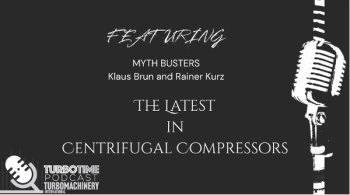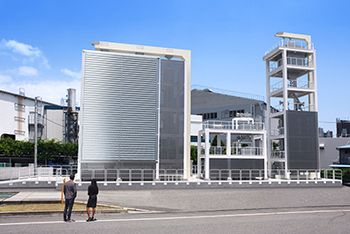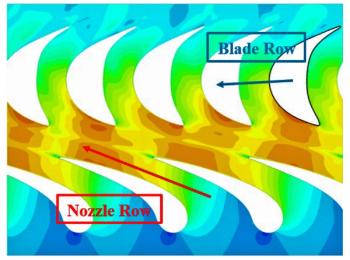
- September/October 2025
- Volume 66
- Issue 5
Turbomachinery International: September/October 2025
Key Takeaways
- Steam turbine optimization focuses on blade dynamics and aerodynamic performance to enhance efficiency and reliability in mechanical drive applications.
- The Hydraulic Institute emphasizes technology integration, predictive maintenance, and decarbonization, shaping future turbomachinery performance through evolving standards and smart systems.
The September/October 2025 issue covers steam turbine optimization, a pump-centric conversation with the Hydraulic Institute, hybrid grid technology for stabilization, and much more.
Turbomachinery International’s September/October 2025 issue is live and includes insights from Ebara Elliott Energy, the Hydraulic Institute, and long-time contributor Drew Robb.
The cover story, Steam Turbine Optimization for Mechanical Drive Applications, Part 1: Blade Dynamics and Aerodynamic Performance, explores how blade dynamics, velocity triangles, and flow path analysis assist operators in achieving higher efficiency and reliability in steam turbines. The authors from Ebara Elliott Energy stress the importance of balancing aerodynamic optimization with mechanical design considerations, reinforcing stability within the wide range of operating conditions required for mechanical drive services.
Also in this issue,
“Of course, HI will continue to leverage technology to make its trusted resources more accessible,” said Michaud. “In addition to growing the online library of industry standards, training, and other resources, the HI Data Tool will become even more “intelligent” when we launch our new AI co-pilot.”
Drew Robb’s new piece, Hybrid Grid Technology Steps Up for 21st Century Grid Stability and Power Generation, outlines flexible solutions such as synchronous condensers and battery storage to stabilize the power supply and address critical issues like inertia, voltage, and short-circuit power. With grid operators struggling to maintain a reliable and stable power supply, a flexible approach may be needed as steam generators and gas turbines slowly dwindle within the power generation network.
In Amin Almasi’s latest Turbo Tips column, he educates readers on preventing leakage and breakage in turbomachinery by addressing thin-wall casings and shell body vulnerabilities. Although these assets play a critical role in turbomachinery, their susceptibility to imperfections and buckling may lead to complete failures, so engineering for reliability is necessary to avoid leakage, operational problems, and overall breakage within the system.
Lastly, the Myth Busters Klaus Brun and Rainer Kurz engage in a back-and-forth dialogue concerning the necessity of high-speed versus low-speed balancing, citing API standards and diving into operating-speed discussions.
“There is a persistent discussion in our industry, especially amongst rotordynamicists, about the need for high (operating) speed balancing versus basic low-speed balancing,” said Brun and Kurz. “Even Rainer and I, who have worked together on turbomachinery projects for nearly 40 years, cannot agree on this. We don’t often disagree on turbomachinery-related issues but, even after multiple beer-drinking sessions, we could not reach a consensus on this topic.”
Articles in this issue
about 1 month ago
Myth: High-Speed vs. Low-Speed BalancingNewsletter
Power your knowledge with the latest in turbine technology, engineering advances, and energy solutions—subscribe to Turbomachinery International today.





